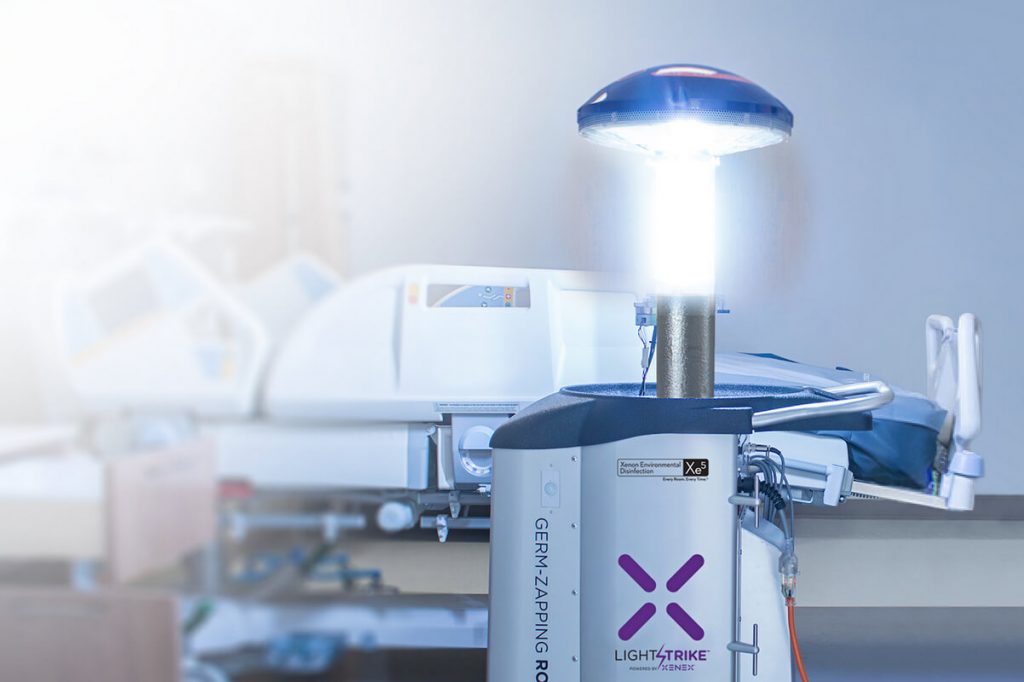During a virus pandemic, there is a certain dilemma. Patients need to be in the hospital for lifesaving treatment, but hospitals can also harbor viruses.
Intensive cleaning and disinfecting do much in hospital rooms, but the risk of hospital acquired infections remains.
But now there is the robot.
The Xenex bug-zapping robot does the final job with light.
Ultraviolet light from the sun — or artificial sources like Xenex — has been scientifically shown to kill bacteria and viruses, even the most evil ones like Ebola.
In 2014, during the Ebola epidemic, the company’s germ-zapping robot was tested in a BioSafety Level 4 laboratory. The space was purposely infected with live Ebola virus and anthrax spores. The Xenex robot quickly destroyed both the virus and spores on surfaces.
In prestigious, peer-reviewed studies in 2018, researchers found that MRSA counts were reduced by 75 percent in the rooms disinfected with pulsed xenon UV devices and aerobic bacteria colony counts were reduced by 84 percent in the pulsed xenon UV rooms, according to Business Wire. Manual disinfection reduced bacteria counts only by 25-30 percent.
Now, the UV light is being used with robotics to kill Covid-19, staph infections, and spores that can cause sickness.
At the cutting edge of this technology, the San Antonio-based Xenex, launched with venture capital in 2013, uses a small robot to flash rooms with UV light. The founders are two Johns Hopkins-educated epidemiologists, Mark Stibich and Julie Stachowiak.
Worldwide, 500 hospitals use Xenex and even hotels and police stations are using it.
The process is simple. The cube-shaped device is rolled into a hospital room and turned on. The user has a few moments to exit the room, then a glass, oval shaped head emerges from the cube, continuously flashing bright UV light around the room for five minutes. With the cycle finished, the attendant enters and moves the robot to the other side of the room and repeats the cycle.
